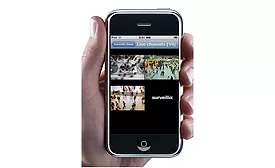Home » Keywords: » mobile surveillance
Items Tagged with 'mobile surveillance'
ARTICLES
Product Spotlight
Mitigates Risk of Terrorist Attacks and Increases Public Safety
May 15, 2019
Enables Instant Mobile Surveillance Access
Mobile Surveillix NVR from Toshiba Surveillance & IP Video Products
December 1, 2016
Delivers Secure, Centralized Viewing to Any Location
Virtual Security Server from Pivot3
April 1, 2016
How New Technology Enables Safer Travel – Six Mass Transit Success Stories
Thirty-five million times every weekday, people rely on public transportation to get to work, school, play and home again every day across the United States.
August 12, 2013
Sign-up to receive top management & result-driven techniques in the industry.
Join over 20,000+ industry leaders who receive our premium content.
SIGN UP TODAY!Copyright ©2025. All Rights Reserved BNP Media.
Design, CMS, Hosting & Web Development :: ePublishing







